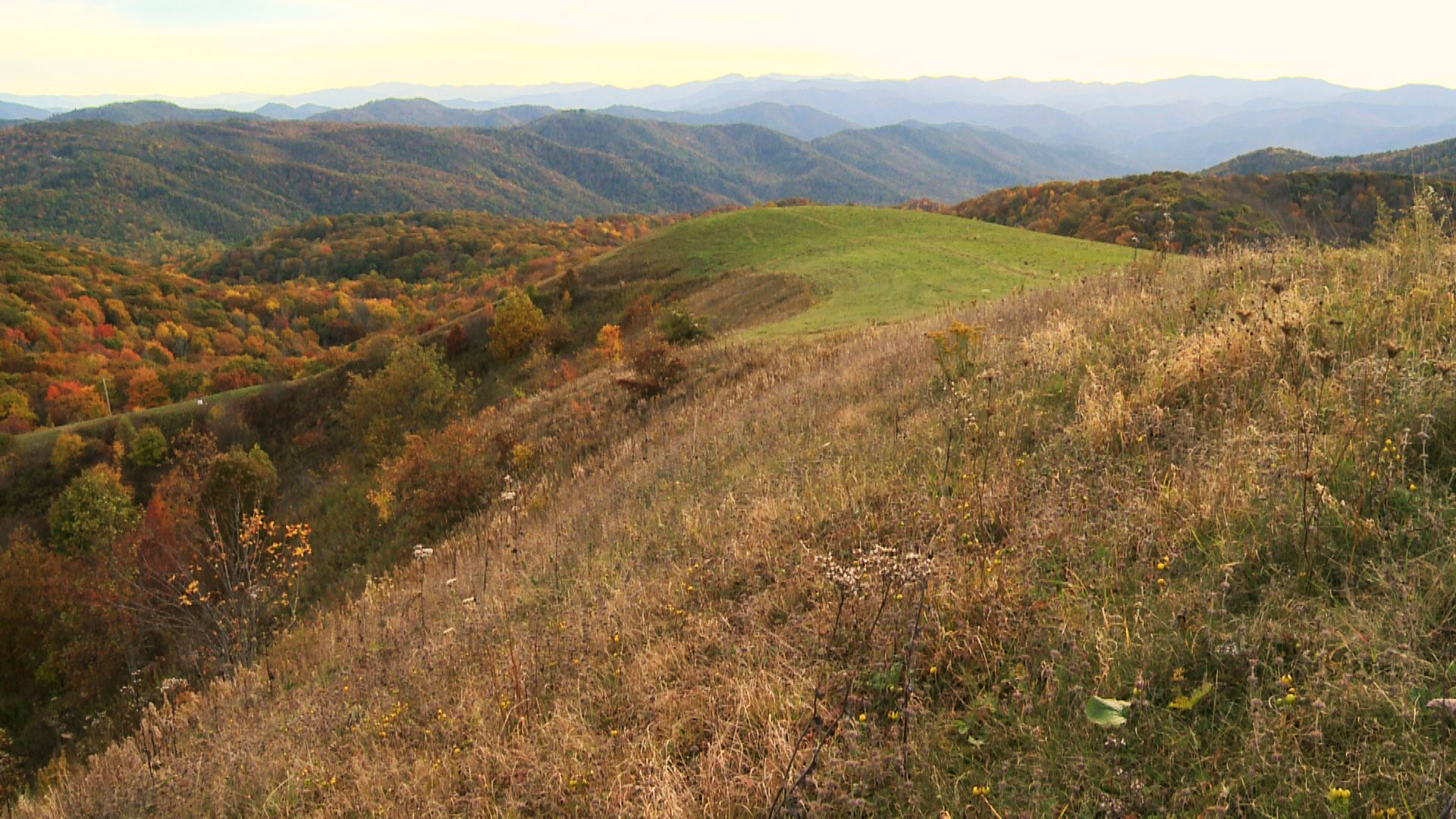(WBIR - Madison County, NC) The Appalachian Trail typically meanders back and forth along the North Carolina and Tennessee state line through a "green tunnel" of canopied forests. At a point in the Pisgah National Forest, the trail climbs out of the trees and into the clouds for a picturesque panorama at a bald mountain top known as Max Patch.
"When friends say 'let's go hiking,' the first thing you think of is Max Patch," said Sara Davis, a member of the Carolina Mountain Club from Asheville, North Carolina.
Davis and her husband, Dwayne Stutzman, have been married since the late 1980s. Their love was built on a shared passion for hiking and caring for the Appalachian Trail.
"I am a professional trail builder and we actually met because of the Appalachian Trail," said Stutzman.
"One of our first dates, we spent hours cutting out a huge tangle of trees on a seven mile stretch of the trail that I maintained," said Davis. "At the end of the day, fate had us."
As fate would have it, the couple soon took over as volunteer caretakers of a portion of the Appalachian Trail considered one of the most beautiful and romantic spots in the mountains.
"Up here at Max Patch, it's just God awful beautiful. We've been taking care of the trail over Max Patch since around 1991," said Stutzman. "You can see shooting stars at nighttime and the view that you get out here, I mean you don't get a 360 view like this a lot of places."
"This is one of the most popular spots for people hiking the trail. There are boxes where you can leave comments about your trip on the trail and everyone invariably says Max Patch is one of their favorite places," said Davis.
The beauty of Max Patch is through-hikers reach the grassy summit the hard way by hoofing it hundreds of miles on the Appalachian Trail. Yet, the grassy patch is also accessible an incredibly easy way with an eight mile drive from Interstate 40 to a parking lot where the top is less than a half mile hike away.
"You don't even have to walk. I've seen babies in little baby carriers being carried up here," said Davis. "I've seen people being pushed on wheelchairs. The fact this is something everyone can enjoy, whether they are hearty hikers or not, makes this such a magnificent area. And I think that draws people together, a love of nature."
As easy as it is to reach now, it took a lot of hard work by Davis and other volunteers to relocate the Appalachian Trail to the top of Max Patch after the forest service bought the property in the 1970s. Before then it was private property and hikers could only admire the bald mountain top from the trail at its old location four miles away.
Max Patch is a man-made bald. The meadow was created when farmers cleared the trees from the mountain top to give cattle a patch to graze in the 19th century.
"This is not a natural bald. There were always cows up on this slope. You know, you'd run the cows up here in the summertime and then take them down to the lower pastures in the wintertime," said Davis.
"It is maintained as a bald by the National Forest Service and the Appalachian Trail. It's one of what we call 'open areas management' locations," said Stutzman. "We maintain the majority of the trail across Max Patch with a walk-behind brush hog."
As clear as the view is today, looking back at how Max Patch got its name becomes a bit cloudy.
Some websites recall a far-fetched story about a horse named Maximilian that always escaped and ran to his favorite patch to graze. That seems like a very unlikely animal tale based on the fact the name was not originally spelled Max. Early 19th century literature refers to the area as "Mac's Patch" or "Mack's Patch."
In the 19th century, the names Mac or Mack were common nicknames for people whose last names began with the "Mc" prefix. Some literature says the area around Max Patch was owned by the McMahan family. Other books say the Mack in question could have been a fellow named McClure Fox who was hired to manage the property, although some suggest it was named before Mack Fox was hired. Whoever the Mack may have been, he is credited with owning and/or farming the patch on the mountain top.
In the 1870s, literature begins to muddy the spelling of the patch. An 1877 resolution in North Carolina to build a new turnpike specifically calls the area "Mack's Patch." Other literature of the time refers to the location as "Max's Patch" while several geological surveys published in 1875 use the spelling "Max Patch Mountain" and "Max Patch Gap."
"There are any number of theories on how it got its name, some probably have more truthfulness than others," said Davis. "You could see how someone would hear the possessive for Mac's and misunderstand to write it down as Max. Or maybe the guy's name was Max. There's no way to know."
Most literature after 1880 refers to the area as Max Patch. In the 20th century, Max took off as a new spot for airborne sightseers. The grassy summit was used as a landing strip for airplanes that took people on scenic joy rides through the mountains.
Today there are no more cows and the airplanes are gone, but Max Patch continues to send people's spirits soaring high in the Appalachians.
"You get to the top of Max Patch and it is a whole new world. There are people who have no idea how the trail got to be here and they have no idea about the history of the place. They just know that it is special. It is just a happy place where you see young families come with children, dogs playing together, and people enjoying God's beauty," said Davis.
Namesake Ideas
If there is a place or landmark with a name you've wondered about in East Tennessee, we would love to hear about it. You can submit your Namesake ideas to Jim Matheny on his Facebook page.


